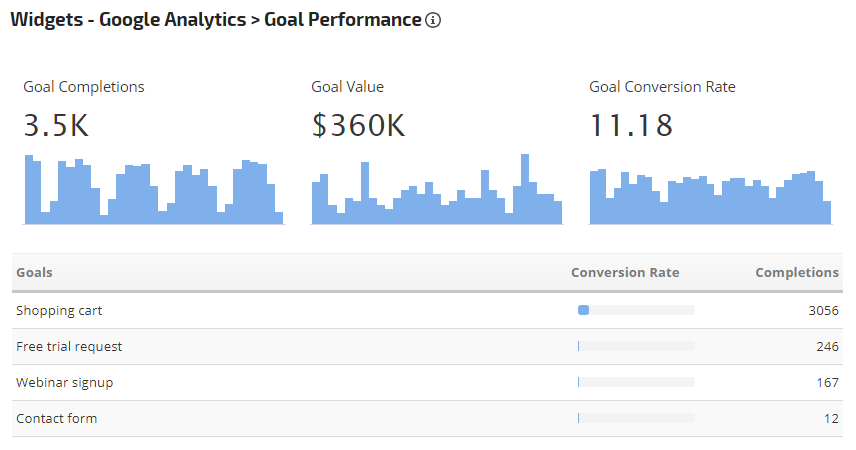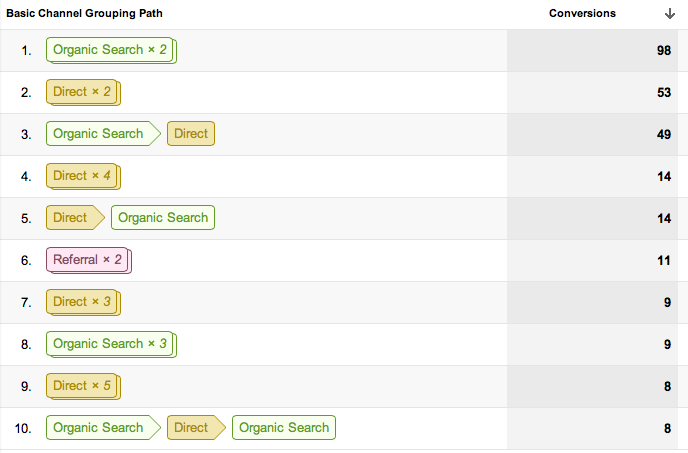What Data Is Google Analytics Goals Unable to Track: A Full Guide
What Data Is Google Analytics Goals Unable to Track: A Full Guide
Blog Article
Discover the Limitations of Google Analytics Goals: Unveiling the Data Kind That Remain Untrackable
As companies increasingly count on data-driven decision-making, comprehending the limitations of tools like Google Analytics becomes vital. While Google Analytics Goals offer valuable insights right into individual interactions, there exist data kinds that avoid monitoring, posturing obstacles to an extensive understanding of customer habits. These untrackable data kinds question about the precision and efficiency of the analytics data that organizations greatly count upon for their digital methods. Interested to uncover the covert blind places in your data analysis process?
Incomplete Individual Journey Tracking
Insufficient customer trip tracking within Google Analytics can impede the capacity to accurately examine customer behavior. When the individual trip is not completely tracked, there are voids in the data that prevent a comprehensive understanding of exactly how individuals communicate with a web site. This lack of insight can result in missed opportunities for optimization and improvements to the user experience.
One common issue with insufficient customer trip tracking is the inability to see the complete course that customers take in the past finishing a goal or leaving the site. Without this information, it is testing to recognize where individuals might be running into challenges or friction points that stop them from transforming. Additionally, incomplete monitoring can obscure the impact of particular advertising and marketing initiatives or site changes on customer habits.
To address this constraint, it is crucial to establish up appropriate tracking systems within Google Analytics to catch the whole customer journey. This might include establishing event monitoring, goal funnels, or using devices like Google Tag Supervisor to make certain that no essential interactions go unrecorded. By getting a comprehensive view of the user journey, website owners can make more educated decisions to enhance user interaction and drive conversions.
Attribution Difficulties
Browsing via attribution challenges in Google Analytics needs a thorough understanding of how different touchpoints contribute to the overall conversion process. Attribution challenges emerge from the intricacy of contemporary client trips, where individuals communicate with several channels prior to converting.
One common attribution difficulty is the difficulty in associating conversions to the proper source, particularly in cases where customers connect with numerous networks before converting. This can lead to inaccuracies in identifying which advertising efforts are driving the most conversions. Additionally, cross-device tracking poses another acknowledgment obstacle, as individuals frequently switch in between tools throughout their trip, making it testing to track their communications effortlessly. Online marketers should thoroughly assess and interpret attribution data to make educated decisions and optimize their advertising and marketing approaches successfully.
Offline Conversions
Provided the obstacles related to connecting conversions accurately in online channels, the dimension of offline conversions offers a considerable possibility for marketing professionals looking for a more detailed understanding of their consumers' journey. Offline conversions refer to actions that clients absorb the physical world, such as making purchases in brick-and-mortar stores or over the phone, going to occasions, or involving with printed materials - what data is google analytics goals unable to track. These conversions are vital for businesses that operate both online and offline, as they offer beneficial understandings into the effectiveness of advertising projects throughout various touchpoints
Tracking offline conversions typically postured a substantial challenge for online marketers, as it was testing to attach these activities back to details online interactions properly. With innovations in technology, such as the integration of CRM systems, distinct identifiers, and discount coupon codes, companies can now connect the space in between online and offline data to acquire a much more alternative view of customer behavior. By successfully gauging offline conversions, marketers can optimize their strategies, allocate resources much more successfully, and ultimately boost the total client experience.
Cross-Device Tracking
Cross-device monitoring plays an important role in recognizing the interconnected nature of consumers' electronic interactions throughout multiple tools. In today's omnichannel world, where customers perfectly switch over between desktop computers, tablet computers, and smartphones, tracking their actions across these tools is essential for marketing professionals to gain a detailed sight of their customer journey.

Furthermore, privacy concerns and policies such as GDPR and CCPA have even more complicated cross-device tracking. With individuals demanding more control over their data and boosted constraints on monitoring technologies, online marketers must discover privacy-compliant and innovative methods to link customer communications across tools.
Dynamic Web Content Involvement
Recognizing customer interaction with dynamic content is pivotal in optimizing digital marketing strategies for enhanced audience communication. Dynamic web content describes site elements that change based on customer actions, choices, or other elements, offering a customized experience. Tracking individual interactions with vibrant content postures difficulties for traditional analytics devices like Google Analytics.
While Google Analytics can track fundamental communications like clicks and page sights, it may battle to catch even more nuanced interactions Bonuses within vibrant material. what data is google analytics goals unable to track. Metrics such as time invested in certain vibrant aspects, hover activities, or communications within pop-ups are often not quickly quantifiable making use of basic tracking techniques. This limitation impedes marketing experts' ability to totally grasp how customers are engaging with dynamic web content and tailor their methods accordingly

Verdict
Finally, Google Analytics objectives have constraints in tracking insufficient user journeys, attributing conversions precisely, catching offline conversions, tracking cross-device interactions, and determining dynamic content involvement. These restraints highlight the relevance of exploring added tracking techniques and devices to acquire a much more extensive understanding of individual habits and conversions beyond what Google Analytics can provide.
While Google Analytics Goals offer valuable understandings right into individual communications, there exist data types that elude monitoring, posing obstacles to an extensive understanding of user behavior.Incomplete user trip monitoring within Google Analytics can prevent the capability to properly assess user behavior. When the customer trip is not completely tracked, there are gaps in the information that protect against a thorough understanding of weblink exactly how individuals interact with a website.One usual concern with incomplete user trip tracking is the inability to see the complete path that Visit This Link customers take previously completing a goal or leaving the website. By acquiring a detailed view of the customer trip, website proprietors can make more informed choices to enhance customer involvement and drive conversions.
Report this page